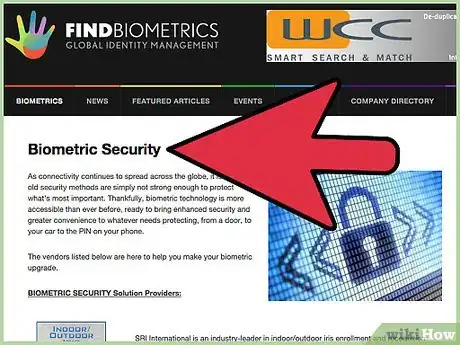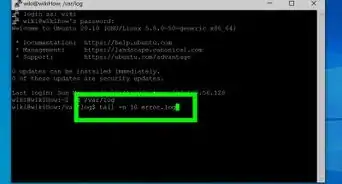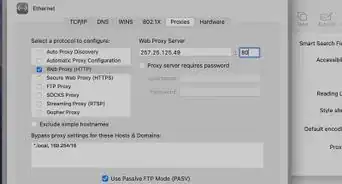wikiHow is a “wiki,” similar to Wikipedia, which means that many of our articles are co-written by multiple authors. To create this article, 12 people, some anonymous, worked to edit and improve it over time.
This article has been viewed 145,210 times.
Learn more...
A server room is the physical space that houses all the data running through the computer network of a business or organization. Most Information Technology professionals spend a lot of their time there, troubleshooting server or network issues and performing routine maintenance. Putting together a safe and accessible data center for the storing of technology and files is essential in creating a hub for IT infrastructure and operations. Design a server room that is safe, spacious and computer friendly for the entire IT team.
Steps
-
1Determine the appropriate room size. Physical space needs must be decided before any further details are incorporated into the server room. There needs to be enough room for the servers, wires, cables, and other necessary equipment. Data should be kept away from an exterior wall, if possible.
-
2Set up hardware for storage. For space maximization, utilize cabinets and shelving to store the physical machinery and other computer inventory in the server room. Telco racks are popular in many operational spaces, and a single rack can hold hundreds of 1U high servers and blade servers.Advertisement
-
3Keep the room cool. A proper server room needs to stay cool and dry to keep all of the equipment from overheating. One option is to install a raised floor to distribute cooling. Another option is to use in-row cooling units, which do not require a raised floor and move the compressor to the roof. You may want a ceiling that is at least 12 to 18 feet (3.7 to 5.5 m) high. Keep a thermometer in the room to ensure the temperature is moderate. A dehumidifier may be necessary if the room gets too humid.
-
4Make space for cables. A server room should have enough space under the floor to run electrical cables. Have an electrician install power whips from 1 central electrical panel. This cuts down on the electrical services being routed to each individual fixture.
-
5Develop security procedures. The server room should be restricted to only the people who need to go there to do work. Keep it locked, or install a handprint or fingerprint recognition system. A secure server room is essential for data protection.
-
6Allow for monitoring. The server room should be monitored around the clock. All activity coming over the network servers should be scanned for abnormalities. Software exists to allow for notifications to pagers, or cell phones and emails if the monitoring reveals anything alarming.
Community Q&A
-
QuestionHow much internet will I need to run a server room?
 Community AnswerIt depends on what you'll use it for. Bigger use = better internet. Also, I would suggest setting up your server room in a place with good internet speeds.
Community AnswerIt depends on what you'll use it for. Bigger use = better internet. Also, I would suggest setting up your server room in a place with good internet speeds. -
QuestionWhat is required in terms of tools to build a server room?
 Community AnswerActually building the server room is something you will have to hire someone to do. For designing the room, I would recommend just getting some shelves (cheap and easy to assemble).
Community AnswerActually building the server room is something you will have to hire someone to do. For designing the room, I would recommend just getting some shelves (cheap and easy to assemble).
Things You'll Need
- Cabinets
- Shelving
- Telco racks
- Thermometer
- Cables
- Locks
- Security system
































































